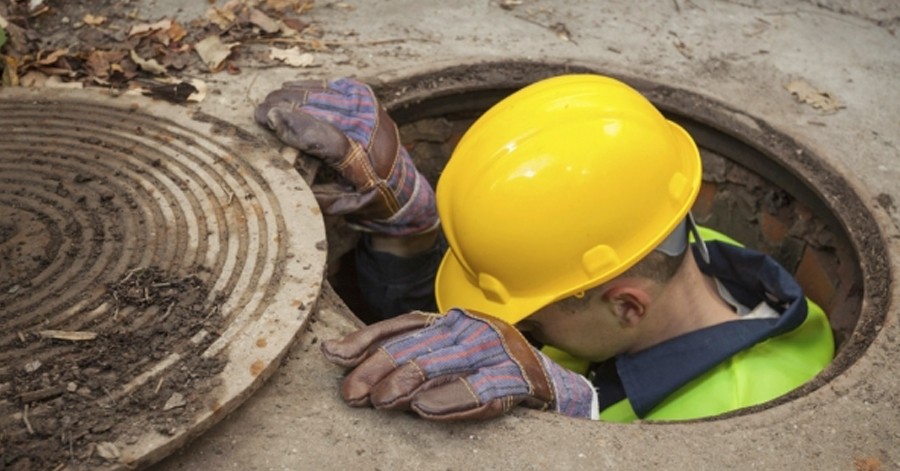Training Safety Consulting Services



Although we believe there is no substitute for in-person training, the best training programs should include several methods of delivery such as online modules, custom videos, and PowerPoint presentations to name a few.
Regardless of your preferences or needs, Premier Safety Partners offers experience in developing solutions best suited to your organizational goals.
Read on for few of the most common training topics we offer. If you don’t see your topic listed, simply contact us today! We’ll customize training services specific to your industry, organization and risks..
Health & Safety Compliance Training
Hazard Communication Training
This course breaks down OSHA's hazard communication standard at 29 CFR 1910.1200 and explains what is required in an employer's HazCom program. During training, your employees will learn the latest OSHA HazCom rules, including new GHS requirements for chemical classification, labeling, and Safety Data Sheets (SDSs).
Upon successful completion of the course, your employees will receive a Certificate of Achievement. This training includes:
Forklift Training
As the name suggests, forklift training works to provide the basis for the safe and effective use of a forklift, including:
Trained operators must know how to operate the forklift properly and safely. To ensure your employees understand and apply this knowledge, we’ll perform a workplace evaluation during the training. Our training options are fully customizable, including options for lecture, video paired with practical exercises and demonstration.

Warehouse Safety Training
Our warehouse safety training provides education and insight into key warehouse safety tips. The potential hazards for workers in warehousing include:
This training session will review these potential hazards and how employers can create a safe work environment and techniques employees can use to protect themselves.
OSHA 10 Hour Training Session
The OSHA 10 hour training course is intended to provide your employees with an overview of the basic health and safety hazards present in the workplace. The training curriculum includes a variety of mandatory topics that typically take around seven hours to complete, including:
OSHA 30 Hour Training
The OSHA 30 Hour Training is a four day course focused on construction standards for individuals seeking up to date knowledge of OSHA policies, procedures and standards, as well as construction safety and health principles.
Topics include the scope and application of the OSHA construction standards, while special emphasis is placed on the most hazardous areas and OSHA standards are used as a guide.
Upon completion of the hourly and course requirements, the participant receives an OSHA 30 Hour Training Certification. This training format has been developed by OSHA (21 hours of mandated topics) in conjunction with PSP (9 hours of supplemental safety and health topics), to fulfill the 30 hour training requirement.
Hazardous Waste Operations
40 Hour Course
Regulatory Knowledge
Technical Knowledge
Technical Skills
This training session will review these potential hazards and how employers can create a safe work environment and techniques employees can use to protect themselves.
Hazardous Waste Operations
8 Hour Course
The focus of this training and associated exercises is to review topics covered in the initial HAZWOPER 40 hour course and ensure employees can objectively demonstrate competency in areas outlined above.

The objective of the confined space training is to emphasize the rules and procedures for identifying, entering, working in, and exiting a confined space, including how to:

Fall Protection Training
The focus of the fall protection training is to provide the knowledge of identifying fall hazards, selecting proper fall protection equipment, determining anchor points, inspecting and maintaining equipment. Topics include:
First Aid, CPR, AED Training
We believe it is critical that personnel in the workplace are trained in the techniques necessary to respond to a fellow worker in case of an emergency. Our instructors are certified through the American Heart Association and have years of experience as a first responders.
In our First Aid, CPR, and AED course, your employees will learn:
Trench Safety Training
Trench and excavation safety training is designed to provide your employees with an awareness of the 1926.650 Standard as well as an introduction to current protective system design and selection. The course will cover the different types, methods and equipment used for reinforcing trenches.
Lockout Tagout (LOTO) Training
When employees are exposed to hazardous energy during servicing, maintenance and adjusting of equipment, they are required to follow the protocols listed under OSHA 1910.147 and 1910.269 Control of hazardous energy. The course will review:
Electrical Safety Training
The electrical safety training course is for personnel who may work on or near exposed energized components and circuit parts greater than 50 volts. As an 8-hour interactive training session, it will cover elements of:
Training is typically conducted through the use of PowerPoint slides, video’s, practical hands on simulation utilizing existing plant equipment as well as client and trainer PPE.
Ergonomics Training
Ergonomics training is a comprehensive solution designed to cover:
Emergency Evacuation Plans
& Training Requirements
Emergency Evacuation Plans training will cover the requirements outlined 1910.38, including:

Environmental Hazards Training
The environmental hazard training is developed specifically for the environments people work in and the hazards associated with these environments. For example, we've previously developed customized environmental hazard training for employees working domestically inside of the U.S. as well as for those who traveled for work internationally.
In either case, our environmental hazard training is typically focused on the identification and protection of hazards, such as:
We also, conduct heat related and cold related sessions within this topic.
Fire Extinguisher Training
The fire extinguisher training covers the classes of fires A, B, C, D, and the science behind fires. Our fire extinguisher training entails:
This training curriculum also covers hot work operations as applicable to customer workplaces.
Personal Protective Equipment
(PPE) Training
All employers are required to train their workforce on the use, selection, inspection, storage and care of personal protective safety equipment used to avoid workplace hazards. Training will cover PPE used by employees for example; safety glasses, goggles, gloves, face shields, respirators, as required in 1910.132.
Respirator Safety Training
Prior to using a respirator, personnel must be trained on:
This course covers the requirements in 1910.134.

Knife Handling Safety Training
for Food Workers
This course is designed to educate management on the skills for training employees on proper knife handling and workplace safety when working around sharp equipment.
Topics covered in the knife handling safety training includes:
Slips, Trips, and Falls Training
for General Industry
This course is designed to assist management in the identification and controls of hazards associated with slip, trip and fall injuries. Covered topics include:
Hearing Conservation Training
This course will review the requirements of a hearing conservation program as outlined in 29 CFR 1910.95.
Our heating conservation training includes:
Fire Prevention Training
Our fire prevention training will cover details of OSHA 1910 Subpart L (1910.155 through 1910.165), which includes:
We will also review maintenance requirement for fire detection and alarm systems.

Excellence: The Difference Between
Reactive and World Class
Proactive Health & Safety Workshops
Safety and Health Leadership Workshop
Join thousands of students around the world who have benefited from attending this Health and Safety Leadership workshop. It’s your first step in creating the right culture, behaviors and systems to achieve best in class performance and operational excellence. It goes without saying these skills will reduce workplace injuries, drive down workers compensation costs, improve quality and increase overall productivity.
The workshop is geared for supervisors, managers and safety professionals who are responsible and accountable for achieving safety performance and who want to increase their effectiveness as leaders.
The key elements of a sustainable organizational safety system covered in this workshop including:
We customize this course to meet your organizational goals, objectives and values. Please give us a call at 888-948-8144 to discuss the process and benefits of taking the first step in your journey to safety excellence.
Safety Committees
This is a very effective training program for members of your organization interested in joining the safety committee or if you are in the early stages of starting a committee.
If you are just in the developing stages of creating a safety committee we’ll cover the fundamentals such as:
We believe the safety committee is an essential cornerstone to any successful safety program.
Hazard Risk Management
This part of the program covers the basics of hazard risk management and how to perform risk assessment in your operations. It teaches the value of a risk based approach and offers an in depth understanding on how to perform, implement and improve risk management in your operations.
You’ll learn how risk management helps your organization achieve business goals, prioritize resources and work proactively to eliminate risk. We also introduce tools to help you such as job safety analysis’, non-routine safety permits, etc.
We address the following steps associated with risk management:

Behavior Based Safety
It is critical that both managers and employees understand how their behavior impacts the safety culture. The behavior based safety workshop explains the difference between safe and at risk behaviors and how individuals, peers and management can prevent injuries with safe actions.
The workshop will demonstrate how to interact with people to change at risk behaviors and reinforce safe behaviors. The workshop allows employees and employer to gain insights into culture, basic principles of behavior, and the critical features of behavior safety implementations necessary to achieve safety excellence.
Accident Investigation

Investigating a worksite incident— a fatality, injury, illness, or close call— provides employers and workers the opportunity to identify hazards in their operations and shortcomings in their safety and health programs. Most importantly, it enables employers and workers to identify and implement the corrective actions necessary to prevent future incidents.
This training focuses on identifying and correcting root causes - not on finding fault or blame. In the process, it can also improve workplace morale, help manage employee stress, and increase productivity, by demonstrating an employer’s commitment to a safe and healthy workplace.
© 2024 by Premier Safety Partners
